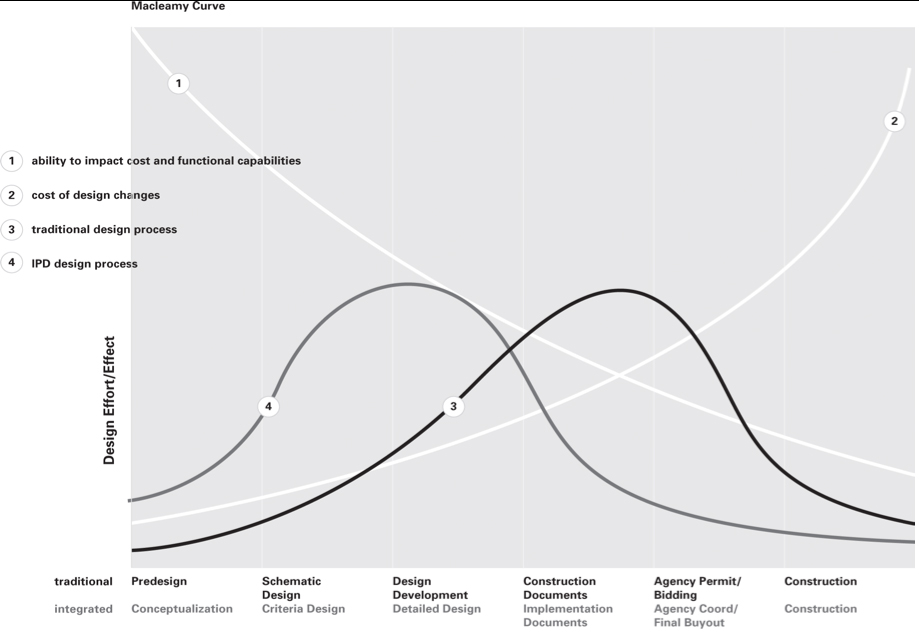

Whatever happened to integrated project delivery? IPD was hailed as a formidable innovation to change they way buildings are designed, bid and executed. But IPD wins the innovation title only when it is compared to conventional design and construction delivery methods, and we're not seeing enough of IPD to make the comparison.
What actually is happening falls somewhere between the IPD ideal and traditional, non-BIM design and construction. We are creeping away from traditional methods. Architects are BIMing, builders are clash detecting and owners are upgrading their facilities management software. The trend generally has been that architects are first out of the gate, with builders close behind and owners trailing.
The collaborative building information modeling technology that supports IPD is very attractive to the design team, maybe even to some builders, but owners are not impressed. Industry forums suggest that despite IPD's strong incentives, the percentage of projects actually using IPD in design or construction still is in the single-digits. IPD is not making a dent. Even one of the largest three-letter architectural firms in the United States has completed, by its own account, only two IDP projects. Owners are not rushing to innovate.
The problem holding IPD back isn't that it doesn't work, but—as with most innovations—it isn't being embraced and implemented.
If we place IPD at one extreme of the technological spectrum and conventional work at the other, the way we succeed at moving the industry to IPD may turn out to be counter-intuitive. It may come simply from changing the order in which we attack the problem.
A PROBLEM OF PERCEPTION
Unsurprisingly, designers and builders champion IPD by presenting its advantages from a designer/builder-centric view of the design and construction process. Their idealization can be easily understood with the ingeniously simple MacLeamy Curve (see Fig. 1).
The graph compares IPD to conventional construction. Viewing this graph from left to right, advantages of IPD are clearly demonstrated to the designer and builder stakeholders.
But an owner-centric view is much broader and may even be viewed in reverse. An owner may want to start by knowing, for instance (reading from right to left) what he or she will be holding in 30 years, or what the market value will be after 15 years; what is the life-cycle cost and how costly are operations? (see Fig. 2.)
When thinking of long-term investment, the owner—as the stakeholder with the largest stake—may literally be thinking of something other than inching one early-phase curve on McLeamy's chart slightly to the left. Some IPD proponents argue that IPD can improve the entire owning and operating experience, and while I think that is true, for the owner, emphasizing the need to change delivery methods for construction-phase advantages may not be a compelling argument, because for the owner, conventional construction is “tried and true.”
A PROBLEM OF INNOVATION INERTIA
Cost is always the “elephant.” There's no getting around it. But for now, let's hold off on this largest impediment and focus on three other obstacles to IPD adoption, while remembering the maxim that metrics must show savings before an investment is likely. Here are three hurdles to overcome:


Post a comment to this article
Report Abusive Comment